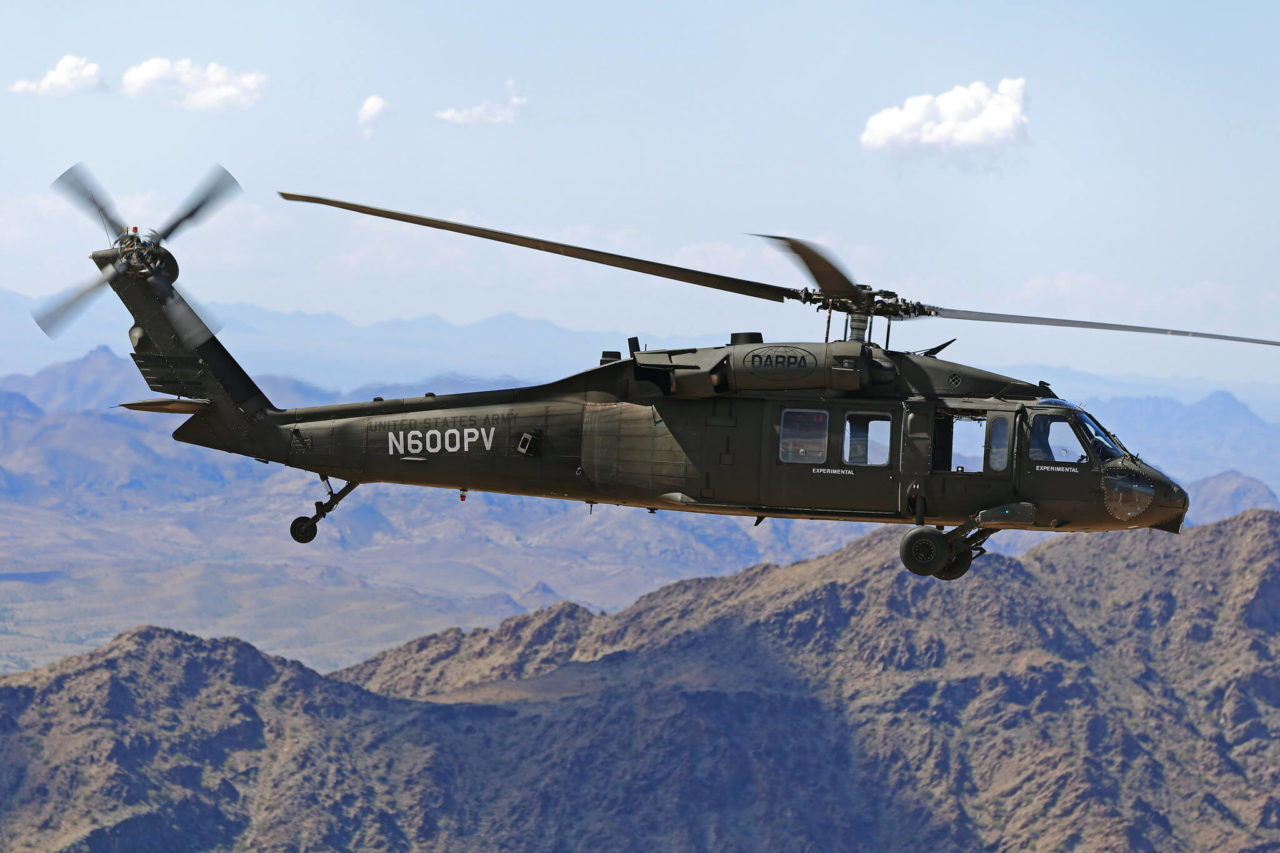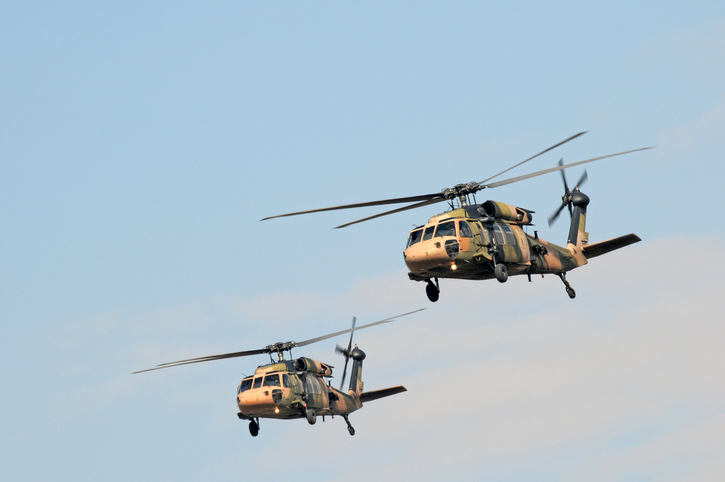Exploring the Capacities of the Sikorsky S 70: A Comprehensive Review
Exploring the Capacities of the Sikorsky S 70: A Comprehensive Review
Blog Article
High-Performance Multi-Role Rotorcraft Featuring Advanced Cabin Technologies and Integrated Sensing Unit Equipments
The realm of rotorcraft innovation has actually seen significant developments in recent times, especially in the world of high-performance multi-role rotorcraft geared up with innovative cockpit modern technologies and flawlessly integrated sensor systems. These innovations have not only augmented the operational capacities of rotorcraft yet have actually additionally significantly impacted modern aviation procedures on different fronts. From boosted goal versatility to boosted functional effectiveness, the convergence of innovative cockpit innovations and integrated sensing unit systems has ushered in a brand-new era of possibilities for rotorcraft applications. In the complying with conversation, we will certainly check out the evolution of rotorcraft modern technology, dive right into the world of sophisticated cockpit advancements, and analyze the ramifications of incorporated sensor systems on the functional versatility and efficiency of modern rotorcraft.
Development of Rotorcraft Technology
The advancement of rotorcraft modern technology has been noted by considerable advancements in aerodynamics, materials, and propulsion systems, shaping the capabilities and performance of modern-day rotorcraft. Wind resistant enhancements have actually enhanced the efficiency and maneuverability of rotorcraft, permitting raised rate, dexterity, and security during trip (sikorsky s 70). Innovations in products, such as using composite materials and advanced alloys, have caused lighter yet more powerful rotorcraft frameworks, boosting general efficiency and longevity. Furthermore, advancements in propulsion systems, including more powerful engines and cutting-edge propulsion technologies, have actually enabled rotorcraft to achieve higher elevations, faster speeds, and higher hauls.
These advancements have not just transformed the abilities of rotorcraft however have additionally increased their applications throughout various sectors, consisting of military, industrial, and emergency situation solutions. The continual development of rotorcraft technology proceeds to drive development in the area, pushing the boundaries of what is possible and shaping the future of vertical flight.
Advanced Cockpit Innovations
Building upon the fundamental innovations in aerodynamics, products, and propulsion systems, the world of rotorcraft innovation now shifts emphasis towards pioneering Advanced Cockpit Innovations. The integration of advanced innovations within the cabin setting plays a crucial role in improving the operational capabilities, safety, and efficiency of contemporary rotorcraft. sikorsky s 70. Advanced Cockpit Innovations incorporate a broad range of attributes created to give pilots with improved situational awareness, structured information administration, and intuitive control user interfaces
One of the key improvements in cabin style is the execution of glass cabins, which replace traditional analog determines with high-resolution display screens. These electronic systems offer personalized designs, real-time data assimilation, and improved readability, allowing pilots to gain access to critical details at a glimpse. Furthermore, advanced avionics systems, such as fly-by-wire controls and boosted truth screens, are changing just how pilots communicate with the airplane, permitting precise control and improved decision-making capabilities.


Including sophisticated cabin advancements not only enhances pilot performance however likewise adds to total objective effectiveness and security in complicated operational environments. By leveraging modern modern technologies within the cockpit, rotorcraft suppliers are establishing new criteria for operational quality and objective success.
Integrated Sensor Systems
With the evolution of rotorcraft modern technology, the assimilation of advanced Integrated Sensing unit Solution has actually become extremely important in enhancing operational efficiency and safety. These Integrated Sensor Systems encompass a large range of technologies that offer vital information for different functions such as navigation, monitoring, targeting, and environmental monitoring. By seamlessly integrating sensors like radars, cameras, lidar, and infrared systems right into rotorcraft, drivers can gain from enhanced situational understanding, boosted mission capacities, and minimized pilot work.
One key advantage of Integrated Sensing unit Solutions is their capacity to collect real-time information and supply actionable insights to pilots and goal operators. For instance, progressed radar systems can identify and track targets over cross countries, enabling very early hazard detection and efficient action preparation. In addition, incorporating electro-optical and infrared cams makes it possible for rotorcraft to carry out reconnaissance and surveillance goals with accuracy and accuracy.
Essentially, the combination of innovative sensing unit modern technologies into i was reading this rotorcraft not just improves functional performance yet also contributes considerably to overall objective success and crew safety. As rotorcraft continue to progress, the duty of Integrated Sensor Systems will undoubtedly remain at the center of innovation in the aerospace market.
Functional Adaptability and Efficiency
Enhancing operational versatility and More Bonuses performance in rotorcraft is an all-natural development from the assimilation of innovative Integrated Sensor Systems. By leveraging the information and insights offered by these sophisticated sensing unit systems, rotorcraft can optimize their efficiency across numerous objectives and settings.
Functional convenience encompasses the capacity of rotorcraft to adjust to different functions and circumstances effectively. With advanced cockpit modern technologies and incorporated sensor systems, rotorcraft can seamlessly transition between jobs such as search and rescue, clinical emptying, security, and more. This versatility enhances the rotorcraft's capability to satisfy varied operational requirements without requiring comprehensive reconfiguration.
Effectiveness in rotorcraft operations is vital for taking full advantage of objective efficiency and source use. Integrated sensor systems play a crucial role in improving operational performance by giving real-time information on climate condition, terrain mapping, target tracking, and much more. This information allows pilots to make informed decisions quickly, optimize flight paths, preserve gas, and boost general objective performance.
Effect On Modern Aeronautics Workflow

Moreover, the assimilation of sophisticated sensing units helps with great post to read improved goal planning and implementation, making it possible for rotorcraft to carry out a vast array of jobs with enhanced precision. From search and rescue operations to aerial firefighting and legislation enforcement missions, the capabilities of contemporary rotorcraft equipped with innovative cockpit modern technologies and integrated sensing unit systems are exceptional.
Furthermore, the impact of these improvements expands beyond operational effectiveness to cost-effectiveness and sustainability. By optimizing trip courses, fuel consumption, and upkeep schedules, high-performance rotorcraft equipped with advanced cabin innovations and sensing units contribute to lowering operational prices and ecological effect, making them crucial assets in contemporary aviation operations.
Verdict
In verdict, the high-performance multi-role rotorcraft with advanced cockpit technologies and incorporated sensing unit systems stands for a substantial development in aeronautics innovation. These developments enhance operational convenience and efficiency, eventually affecting modern-day aviation operations in a favorable way. The combination of these advanced innovations enables boosted capabilities and efficiency in numerous mission circumstances, showcasing the continued innovation of rotorcraft modern technology in the aeronautics market.
The realm of rotorcraft technology has actually seen notable improvements in recent times, specifically in the realm of high-performance multi-role rotorcraft furnished with innovative cabin modern technologies and perfectly integrated sensing unit systems. From enhanced objective flexibility to improved operational effectiveness, the convergence of innovative cabin technologies and integrated sensing unit systems has ushered in a new age of opportunities for rotorcraft applications. In the following discussion, we will certainly explore the advancement of rotorcraft technology, delve right into the realm of sophisticated cockpit technologies, and take a look at the ramifications of integrated sensor systems on the functional flexibility and performance of modern rotorcraft.

Report this page